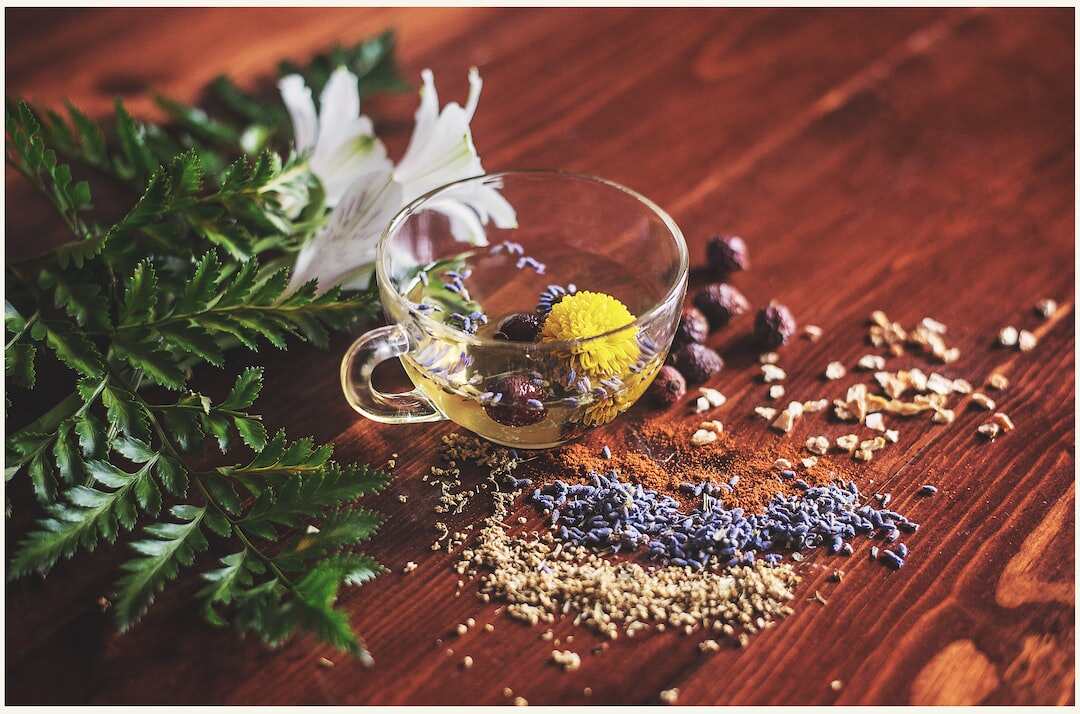Understanding Hardiness Zones: The Key to Successful Tea Growing
Have you ever wondered why some plants thrive in certain areas, while others struggle to survive? The answer lies in understanding hardiness zones, a concept introduced by the United States Department of Agriculture (USDA) in 1960. Hardiness zones are geographic areas defined by their average minimum temperature range in winter. By knowing your hardiness zone, you can choose the right plants for your climate and ensure their success.
What are Hardiness Zones?
Hardiness zones are based on the lowest average temperature a region experiences during the winter months. The USDA divides the United States into 13 hardiness zones, ranging from zone 1 (coldest) to zone 13 (warmest). The lower the number of the zone, the colder the average winter temperature. For example, zone 1 can experience winter temperatures as low as -60F, while zone 13 never dips below 60F.
Why are Hardiness Zones Important for Tea Growing?
Camellia sinensis, the plant from which tea is made, is typically hardy to zone 7 or 8, meaning it can withstand winter temperatures down to 10-20 degrees Fahrenheit. If you live in a colder zone, you can still grow Camellia sinensis, but you may need to take extra precautions such as providing winter protection or growing it in a greenhouse. By knowing your hardiness zone, you can choose the appropriate variety of Camellia sinensis and ensure its survival in your region.
But hardiness zones aren’t just important for tea growers. Any gardener looking to choose the right plants for their climate and ensure their success should take hardiness zones into consideration.
How to Determine Your Hardiness Zone
The USDA provides an interactive map on their website that allows you to enter your zip code and find your hardiness zone. You can also consult a hardiness zone map specific to your region or ask a local nursery for advice.
Conclusion
Understanding hardiness zones is the key to successful tea growing and gardening in general. By choosing the right plants for your climate, you can ensure their survival and enjoy a thriving garden year after year. So, before you plant your next crop of tea or any other plant, be sure to know your hardiness zone!
The Hardy Camellia Sinensis: Factors Affecting its Growth and Survival
Camellia sinensis, also known as the tea plant, is a hardy evergreen shrub that belongs to the family Theaceae. It is widely cultivated for its leaves, which are used to produce tea, one of the most popular and beloved beverages in the world. However, growing camellia sinensis is not always a walk in the park, as it requires specific environmental conditions and care to thrive.
Hardiness Zones
Camellia sinensis plants are hardy in USDA hardiness zones 7 to 9, which are regions with an average minimum winter temperature range of 0 to 30F (-17 to -1C). However, some cultivars of camellia sinensis may have different hardiness ranges, depending on their genetic traits and adaptation to specific environmental conditions.
Environmental Factors
The hardiness of camellia sinensis plants can be influenced by various environmental factors, such as temperature, humidity, rainfall, soil quality, sunlight exposure, and wind. Let’s take a closer look at each of these factors.
Temperature
Extreme temperatures, either too low or too high, can damage or kill camellia sinensis plants, especially during winter dormancy or summer heat stress. Therefore, it is essential to choose a suitable location for planting, where the temperature is within the recommended range. Additionally, providing winter protection, such as mulching or covering, can help prevent frost damage.
Humidity and Rainfall
Humidity and rainfall can affect the moisture level of the soil and leaves, which can impact the growth and health of camellia sinensis plants. Excessive moisture can lead to root rot, while drought can cause leaf withering and plant stress. Therefore, it is important to provide adequate drainage and irrigation, and to avoid overwatering or underwatering. In areas with high humidity and rainfall, it may be necessary to prune the plants to improve air circulation and reduce moisture buildup.
Soil Quality
Soil quality is crucial for camellia sinensis plants, as they prefer acidic, well-draining, and nutrient-rich soils. Poor soil conditions can hinder their growth and productivity, and make them more vulnerable to pests and diseases. Therefore, it is recommended to test the soil pH and nutrient levels, and to amend the soil as needed with organic matter, such as compost or peat moss.
Sunlight Exposure
Sunlight exposure can also affect the hardiness of camellia sinensis plants, as they require some shade during hot summer months and protection from harsh winter winds. Too much or too little sunlight can alter their metabolism and photosynthesis, which can impact their survival and yield. Therefore, it is recommended to plant them in partial shade or filtered sunlight, and to provide shade cloth or windbreaks if necessary.
Wind
Wind can damage camellia sinensis plants by breaking branches, drying out leaves, and causing soil erosion. Therefore, it is important to plant them in sheltered areas or use windbreaks to protect them from strong gusts. Additionally, staking or tying the plants can help prevent them from bending or breaking under windy conditions.
Conclusion
Camellia sinensis is a hardy and versatile plant that can thrive in various environmental conditions, as long as the right factors are provided. By paying attention to temperature, humidity, rainfall, soil quality, sunlight exposure, and wind, you can ensure the growth and survival of your camellia sinensis plants, and enjoy a delicious and healthy cup of tea.
Growing Camellia Sinensis: Understanding Hardiness Zones
Tea lovers know the importance of quality tea leaves. What many don’t know is that the key to growing delicious tea is in understanding the hardiness zones of Camellia sinensis. This plant species, native to East Asia, is commonly used for tea production. While it can thrive in other parts of the world with suitable climate conditions, it has specific hardiness zone requirements in order to grow and produce quality tea leaves.

What are hardiness zones?
The hardiness zone is a system used to identify the climate conditions of a certain area based on its average annual minimum temperature. This system is important for plant cultivation as it helps to determine which plants can survive in a particular location.
The ideal hardiness zone for Camellia sinensis
The ideal hardiness zone for Camellia sinensis is between zone 7 and zone 9, where the minimum temperature ranges from 0 to 25 degrees Fahrenheit (-18 to -4 degrees Celsius). However, Camellia sinensis can also grow in zones 6 and 10 with proper care and protection during extreme weather conditions.
Why is understanding hardiness zones important for tea enthusiasts?
A detailed map of different hardiness zones is essential for tea enthusiasts who want to cultivate Camellia sinensis in their own backyard. The map can help them identify the suitable location for tea cultivation and ensure the success of their tea garden.
Conclusion
Understanding hardiness zones is crucial for growing Camellia sinensis and producing high-quality tea leaves. With this knowledge, tea enthusiasts can choose the best location for their tea garden and enjoy the fruits of their labor.
References:
- https://www.gardeningknowhow.com/edible/tea/growing-tea-plants.htm
- https://www.gardeningchannel.com/growing-tea-in-your-own-backyard/
- https://www.almanac.com/plant/camellias
Growing Tea: Tips for Different Hardiness Zones
Tea is a beloved beverage around the world, and it all starts with the Camellia sinensis plant. This perennial plant can be grown in different hardiness zones, but what exactly are hardiness zones? These zones are determined by climate and temperature and range from 1 (coldest) to 13 (warmest) in the United States.
If you’re interested in growing your own tea, here’s what you need to know about growing Camellia sinensis in different hardiness zones:
Hardiness Zones 7-9
Most of the southern United States falls within hardiness zones 7-9, which are ideal for growing Camellia sinensis. However, it can also be grown in other zones with proper care and protection. Here are some tips for growing tea in these zones:
- Select the appropriate cultivar for the zone
- Provide adequate sunlight and water
- Fertilize regularly
- Prune to maintain shape and promote growth
- Protect from pests and diseases
- Consider companion planting with herbs or flowers that repel pests or attract beneficial insects
By following these best practices, you can enjoy a bountiful harvest of tea leaves.
Colder Zones
If you live in a colder zone, don’t worry! You can still grow Camellia sinensis with a little extra care. Here are some tips:
- Grow in containers and bring indoors during the winter
- Plant in protected areas such as against a south-facing wall or in a greenhouse
- Select the appropriate cultivar for the zone
- Provide adequate sunlight and water
- Fertilize regularly
- Prune to maintain shape and promote growth
- Protect from pests and diseases
- Consider companion planting with herbs or flowers that repel pests or attract beneficial insects
With proper care and protection, you can enjoy fresh tea leaves even in colder zones.
Warmer Zones
Tea plants can be grown outdoors year-round in warmer zones, but they may require shade and regular watering to prevent heat stress. Here are some tips for growing tea in warmer zones:
- Select the appropriate cultivar for the zone
- Provide adequate shade and water
- Fertilize regularly
- Prune to maintain shape and promote growth
- Protect from pests and diseases
- Consider companion planting with herbs or flowers that repel pests or attract beneficial insects
By following these best practices, you can grow healthy tea plants and enjoy a delicious cup of tea.
Sharing Tips and Techniques
Growing tea can be a rewarding experience, and sharing tips and techniques can help growers in different zones learn from each other and improve their yields and flavor. Whether you’re a seasoned grower or a beginner, there’s always something new to learn.
So why not start today? Connect with other tea growers in your area or online, and share your knowledge and experience. Together, we can continue to grow and enjoy the wonderful world of tea.


Leave a Reply